Abstract
This study compared self-regulation and external regulation procedures in the treatment of children's disruptive classroom behavior. After baseline data were collected, three of the four most disruptive children in each of 10 first- and second-grade classrooms received reinforcement for achieving low rates of disruptive behavior. The fourth child served as a control subject throughout the experiment. Two of the three experimental subjects were then taught to self-observe their own disruptive behavior. In the final reinforcement period, these subjects were given control over dispensing reinforcers to themselves, based on their self-collected behavioral data while subjects in the other experimental group continued with the externally managed reinforcement. In extinction, reinforcement was discontinued for all subjects, but one of the self-regulation subjects in each classroom continued overtly to self-observe. Results indicated that both reinforcement programs reduced disruptive behavior. The self-regulation procedures were slightly more effective in reducing disruptiveness than was the external regulation procedure, and this advantage persisted into extinction. These results suggest that self-regulation procedures provide a practical, inexpensive, and powerful alternative in dealing with disruptive behavior in children.
Full text
PDF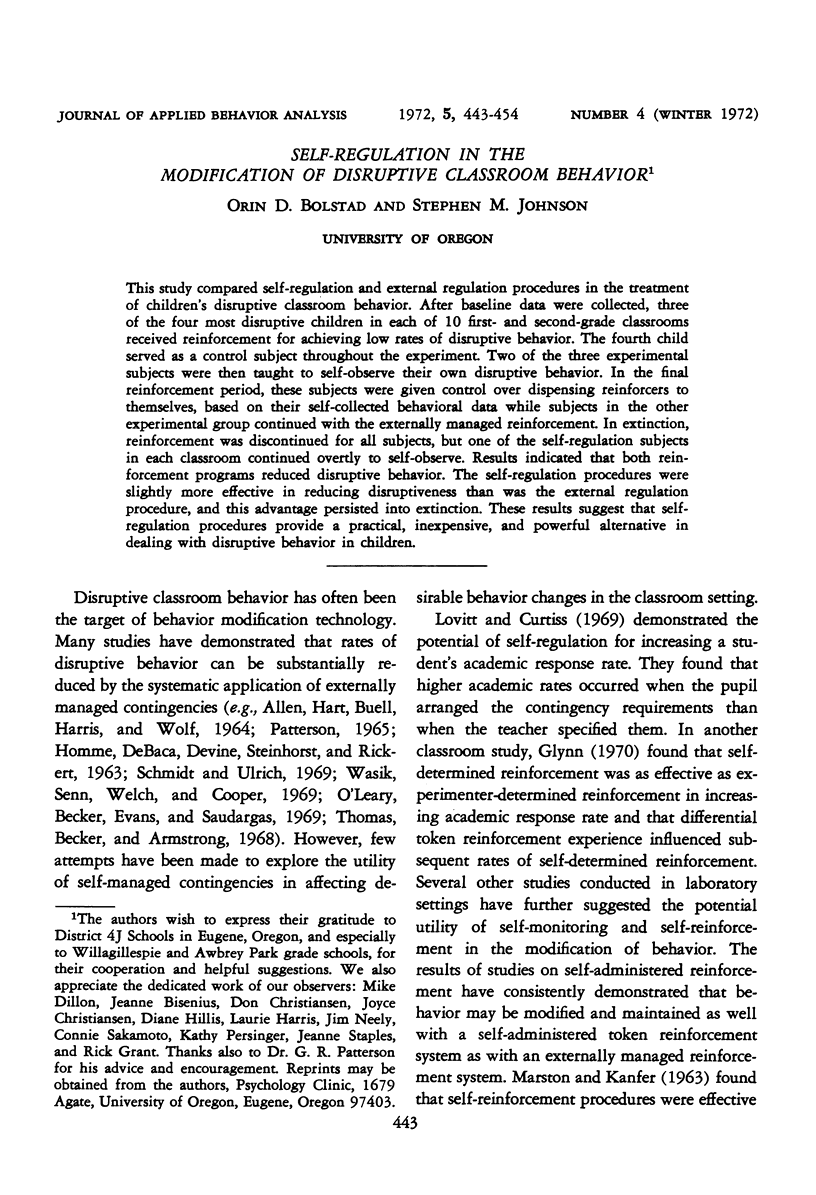
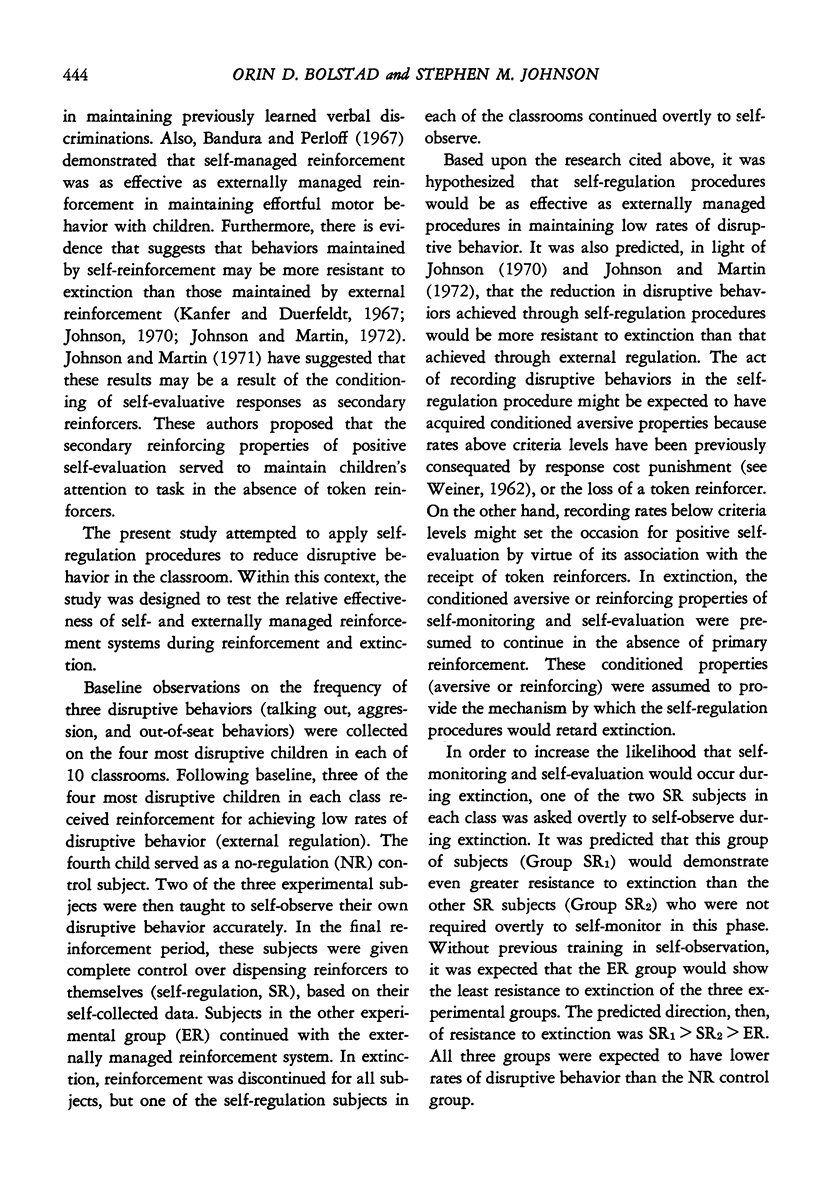
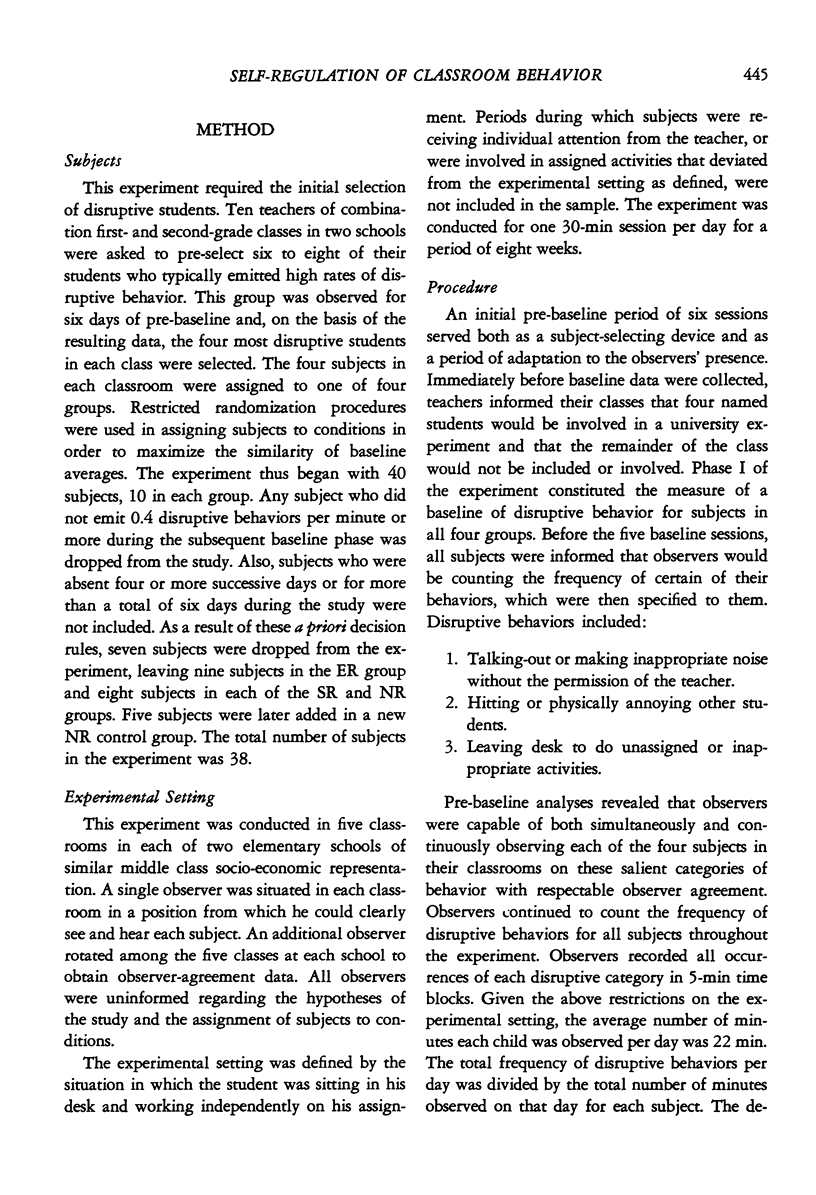
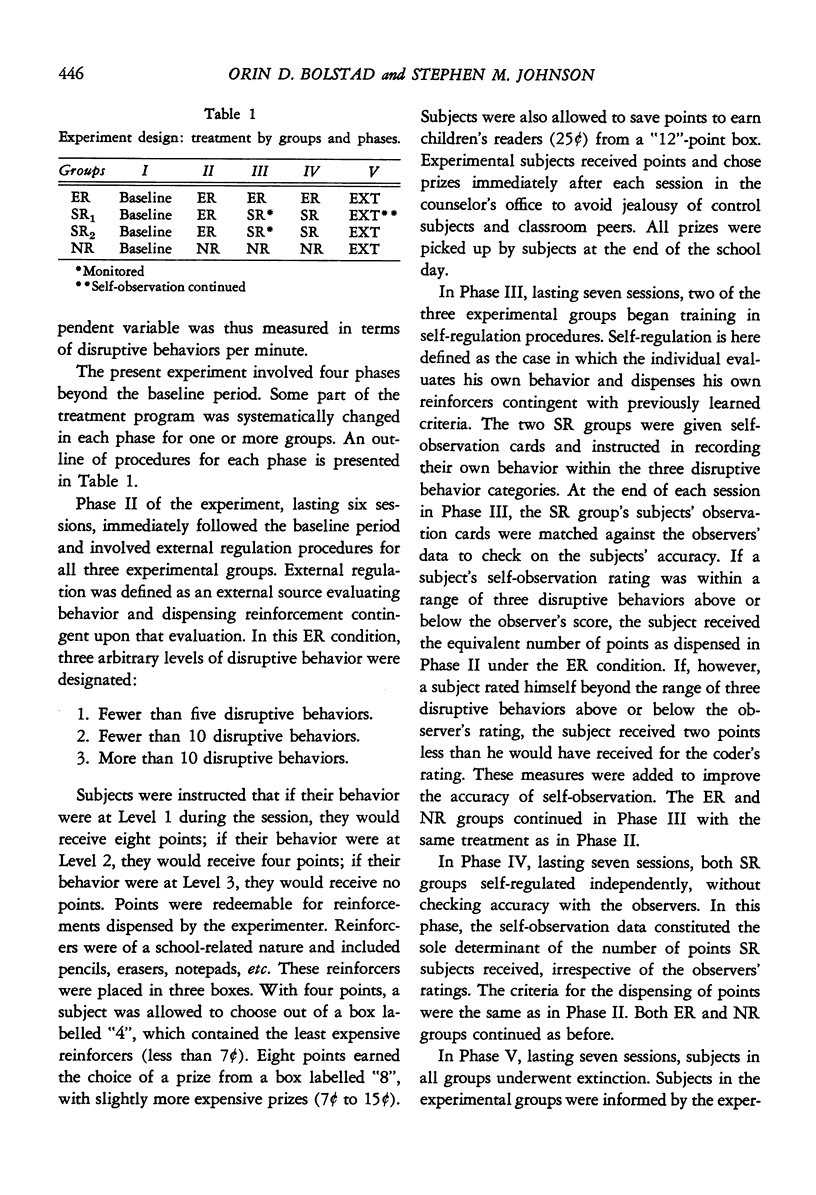
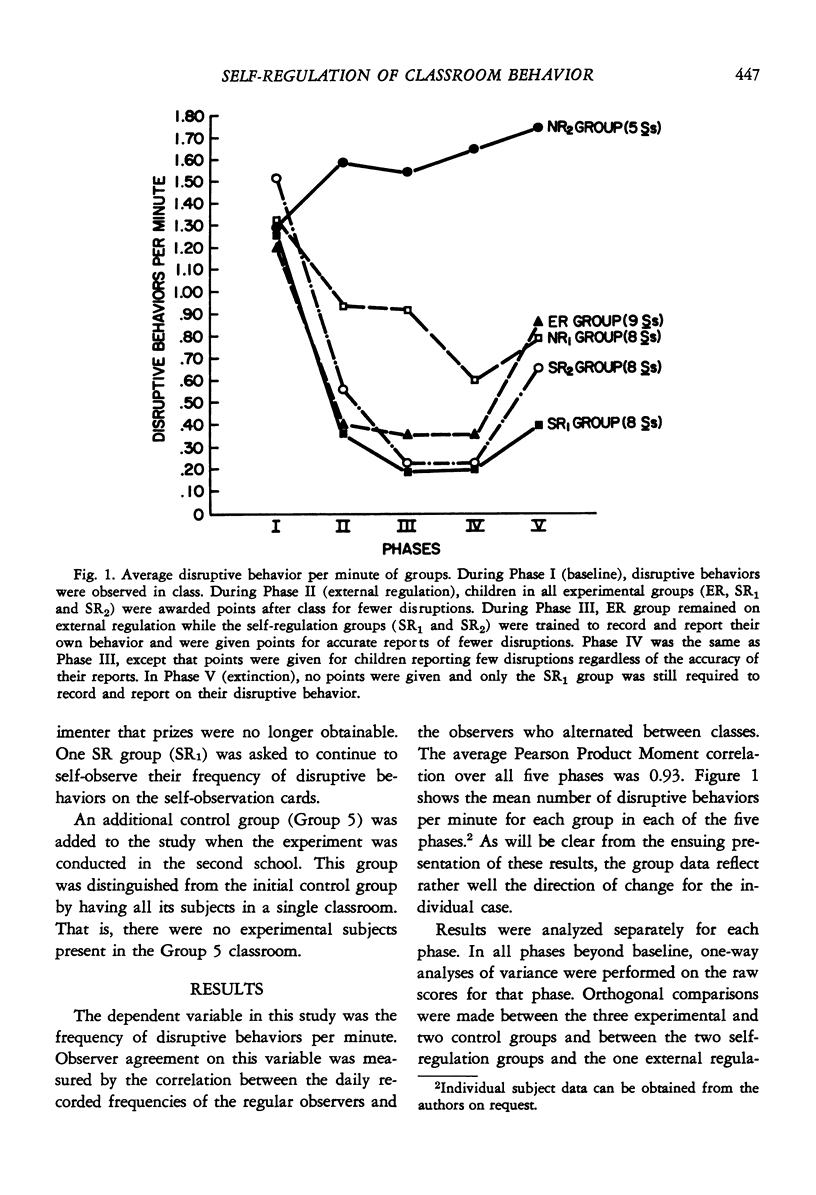
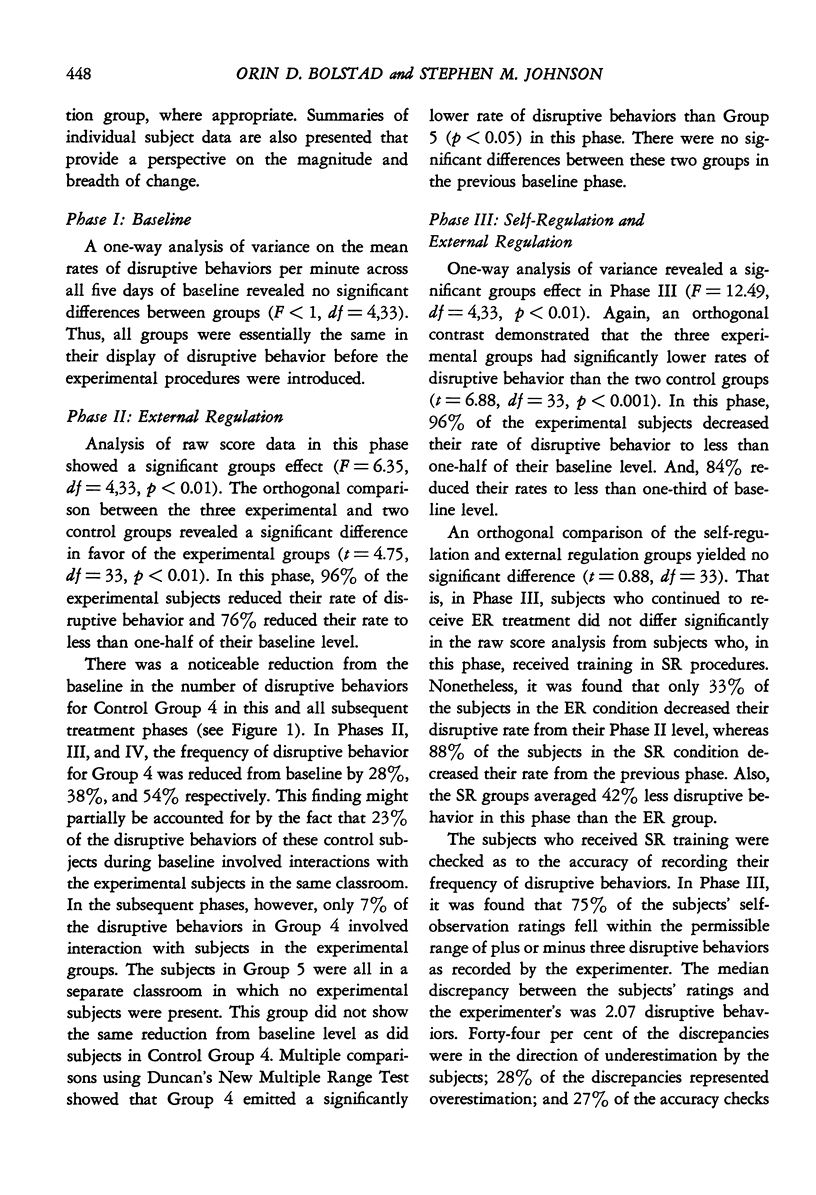
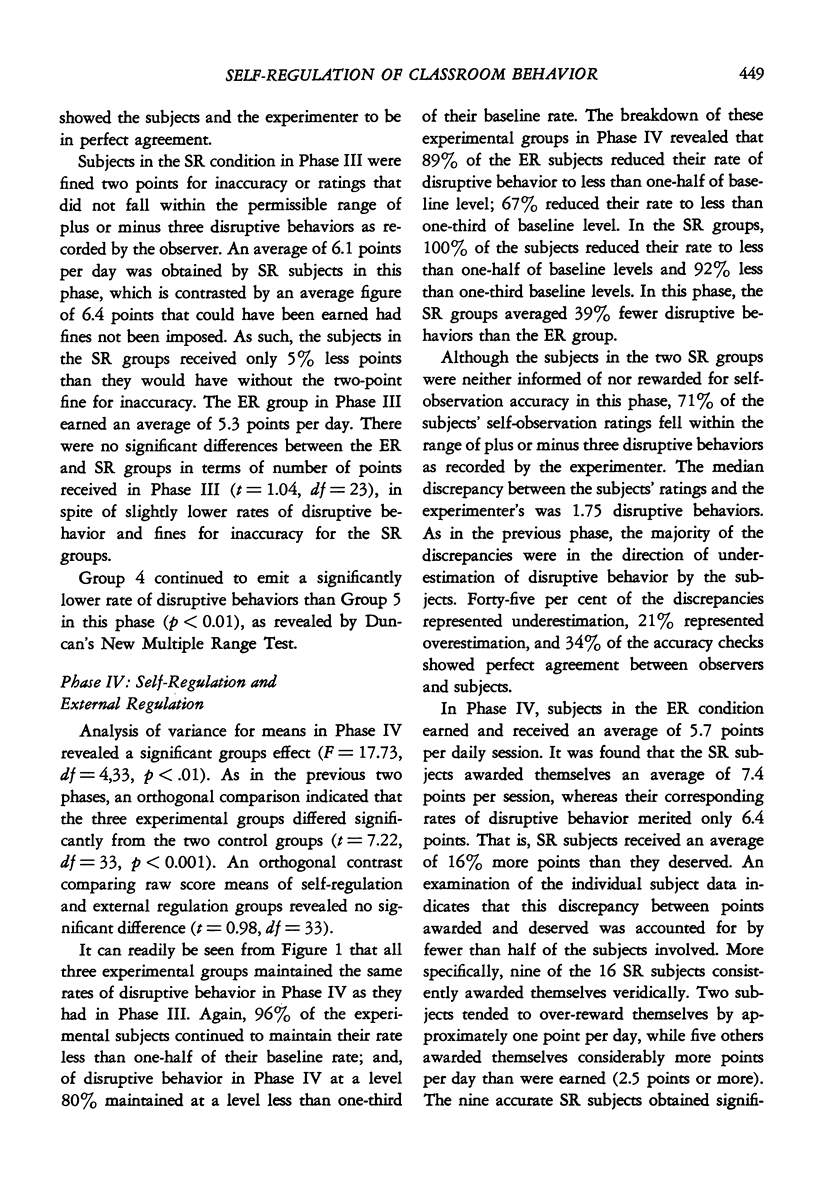
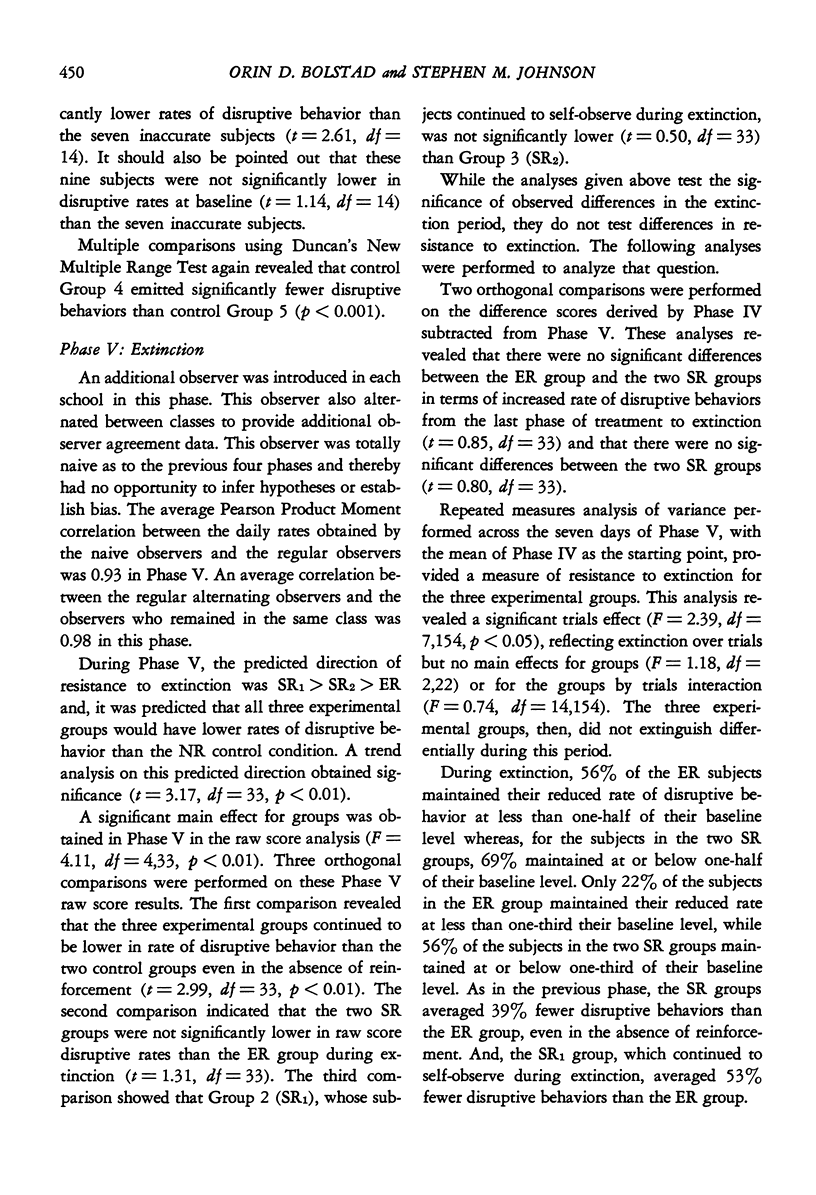
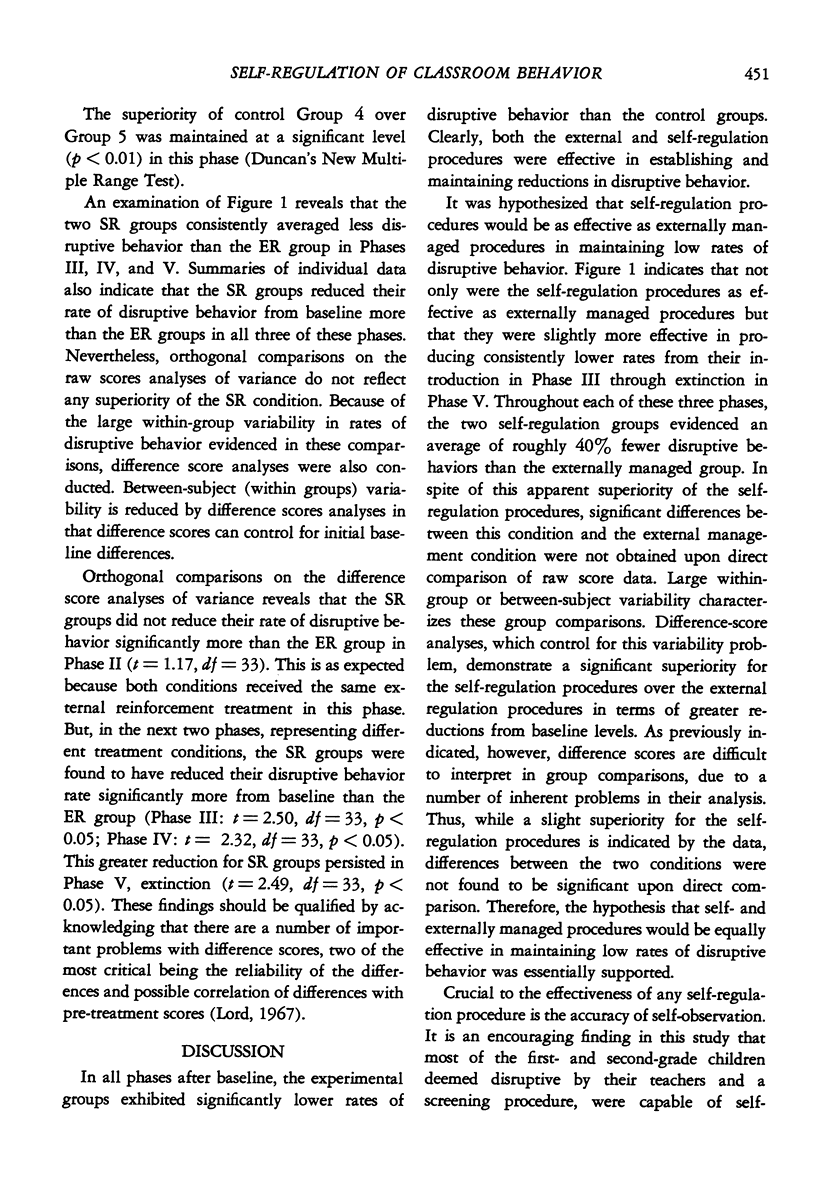
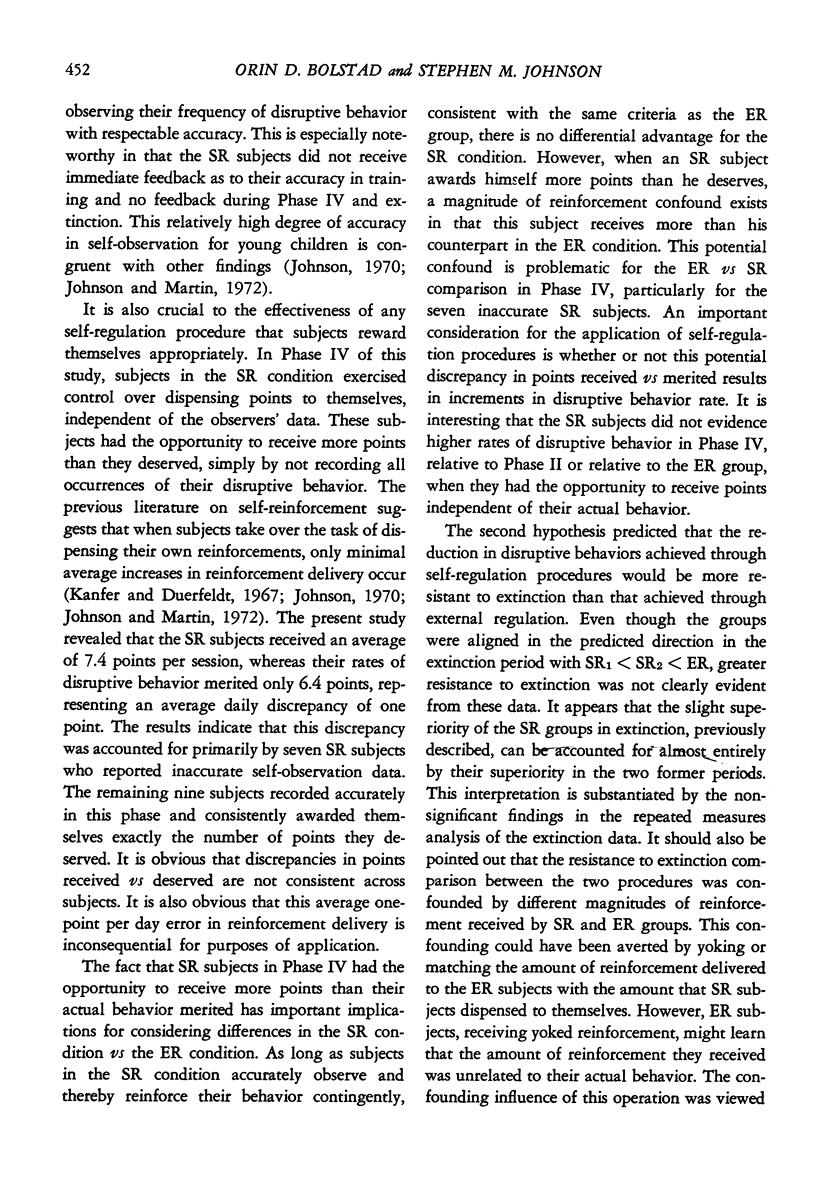

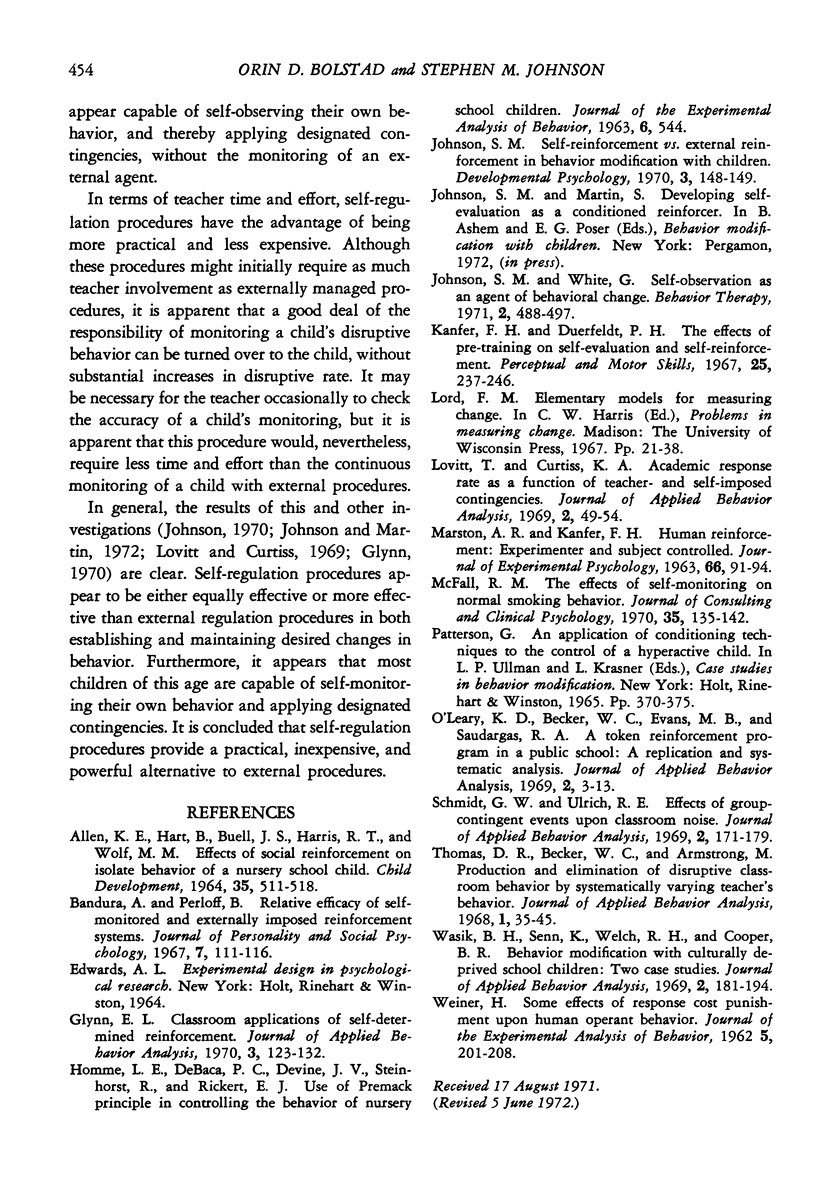
Selected References
These references are in PubMed. This may not be the complete list of references from this article.
- ALLEN K. E., HART B., BUELL J. S., HARRIS F. R., WOLF M. M. EFFECTS OF SOCIAL REINFORCEMENT ON ISOLATE BEHAVIOR OF A NURSERY SCHOOL CHILD. Child Dev. 1964 Jun;35:511–518. doi: 10.1111/j.1467-8624.1964.tb05188.x. [DOI] [PubMed] [Google Scholar]
- Glynn E. L. Classroom applications of self-determined reinforcement. J Appl Behav Anal. 1970 Summer;3(2):123–132. doi: 10.1901/jaba.1970.3-123. [DOI] [PMC free article] [PubMed] [Google Scholar]
- HOMME L. E., DEBACA P. C., DEVINE J. V., STEINHORST R., RICKERT E. J. USE OF THE PREMACK PRINCIPLE IN CONTROLLING THE BEHAVIOR OF NURSERY SCHOOL CHILDREN. J Exp Anal Behav. 1963 Oct;6:544–544. doi: 10.1901/jeab.1963.6-544. [DOI] [PMC free article] [PubMed] [Google Scholar]
- Kanfer F. H., Duerfeldt P. H. Motivational properties of self-reinforcement. Percept Mot Skills. 1967 Aug;25(1):237–246. doi: 10.2466/pms.1967.25.1.237. [DOI] [PubMed] [Google Scholar]
- Lovitt T. C., Curtiss K. A. Academic response rate as a function of teacher- and self-imposed contingencies. J Appl Behav Anal. 1969 Spring;2(1):49–53. doi: 10.1901/jaba.1969.2-49. [DOI] [PMC free article] [PubMed] [Google Scholar]
- McFall R. M. Effects of self-monitoring on normal smoking behavior. J Consult Clin Psychol. 1970 Oct;35(2):135–142. doi: 10.1037/h0030087. [DOI] [PubMed] [Google Scholar]
- O'leary K. D., Becker W. C., Evans M. B., Saudargas R. A. A token reinforcement program in a public school: a replication and systematic analysis. J Appl Behav Anal. 1969 Spring;2(1):3–13. doi: 10.1901/jaba.1969.2-3. [DOI] [PMC free article] [PubMed] [Google Scholar]
- Schmidt G. W., Ulrich R. E. Effects of group contingent events upon classroom noise. J Appl Behav Anal. 1969 Fall;2(3):171–179. doi: 10.1901/jaba.1969.2-171. [DOI] [PMC free article] [PubMed] [Google Scholar]
- Thomas D. R., Becker W. C., Armstrong M. Production and elimination of disruptive classroom behavior by systematically varying teacher's behavior. J Appl Behav Anal. 1968 Spring;1(1):35–45. doi: 10.1901/jaba.1968.1-35. [DOI] [PMC free article] [PubMed] [Google Scholar]
- WEINER H. Some effects of response cost upon human operant behavior. J Exp Anal Behav. 1962 Apr;5:201–208. doi: 10.1901/jeab.1962.5-201. [DOI] [PMC free article] [PubMed] [Google Scholar]
- Wasik B. H., Senn K., Welch R. H., Cooper B. R. Behavior modification with culturally deprived school children: two case studies. J Appl Behav Anal. 1969 Fall;2(3):181–194. doi: 10.1901/jaba.1969.2-181. [DOI] [PMC free article] [PubMed] [Google Scholar]


